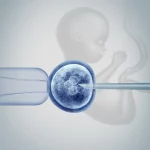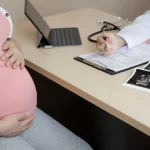
How the uterine lining shapes implantation odds, timelines, and costs
What It Is
Endometrial thickness refers to the measurement of the uterine lining (usually in millimeters) before embryo transfer. It matters because a lining that is too thin or irregular can lower implantation odds. This article explains:
- Thresholds that matter most (e.g., <6mm vs 7–8mm+).
- Tactics clinics use to improve thickness and quality.
- How timing, budget, and choices affect results.
Who It Helps
This guidance is useful for:
- Patients with repeated thin lining on ultrasound.
- Those with RIF or RPL where uterine factors are suspected.
- Anyone reviewing their IVF protocols, medication plans, or uterine imaging.
- Intended parents who want to understand when to proceed, pause, or adjust.
Step-by-Step
- Baseline scan → Check lining before stimulation.
- Stimulation monitoring → Measure thickness as estrogen rises.
- Threshold check → Clinics often aim for ≥7mm with good trilaminar pattern.
- Adjust tactics → Estrogen route change (oral vs. vaginal vs. injectable), add adjuvants.
- Decision point → Proceed with transfer, delay, or change protocol.
Pros & Cons
Pros of monitoring thresholds
- Improves timing of transfer.
- Avoids wasted embryos when lining is suboptimal.
- Creates a clear decision framework.
Cons / trade-offs
- Some patients have persistently thin lining despite multiple tactics.
- Add-on treatments (e.g., G-CSF, PRP, stem cell therapy) can add cost without guaranteed benefit.
- May require cycle cancellation, adding time and stress.
Costs & Logistics
- Ultrasound monitoring: $200–$600 per cycle.
- Medications (estrogen, adjuvants): $500–$1,500 depending on route.
- Advanced interventions (PRP, stem cell, G-CSF): $2,000–$5,000, often not covered by insurance.
- Insurance pre-authorizations are common; budget planning helps avoid surprise bills.
What Improves Outcomes
- Optimizing estrogen delivery (patches, injections, vaginal tablets).
- Uterine cavity evaluation (remove polyps, adhesions, or fibroids).
- Protocol timing (avoiding premature progesterone exposure).
- Healthy lifestyle factors (blood flow, reduced smoking/alcohol, balanced hormones).
- Mental health support to reduce stress and decision fatigue.
Case Study
A 32-year-old patient had two failed transfers with a lining of 5.5–6mm. Her clinic added vaginal estrogen plus a uterine cavity check. By cycle three, her lining reached 7.4mm with good pattern, and she achieved a successful implantation.
Key insight: Adjusting delivery method and checking the cavity shifted odds.
Mistakes to Avoid
- Proceeding with transfer when lining is consistently <6mm without exploring causes.
- Assuming more medications always solve thin lining.
- Skipping uterine cavity checks before adding advanced therapies.
- Focusing only on thickness while ignoring pattern and timing.
- Overlooking budget and insurance implications of “add-ons.”
FAQs
Q. What is the minimum endometrial thickness for embryo transfer?
Ans : Most clinics aim for ≥7mm with trilaminar pattern, but some pregnancies occur at 6mm. Below that, success rates drop.
Q. Can I get pregnant with a thin lining?
Ans : Yes, but odds decrease. Success rates are higher with thicker, well-patterned lining.
Q. What can improve lining thickness?
Ans : Changing estrogen delivery (patch, injectable, vaginal), checking for uterine issues, or using adjuvants if indicated.
Q . Should I cancel a cycle if my lining is thin?
Ans : Not always. Some clinics will proceed at 6mm if the pattern is good, while others recommend canceling to protect embryos.
Q. Are expensive add-on therapies worth it?
Ans : Evidence is mixed. Start with evidence-based basics (protocol adjustment, uterine evaluation) before trying costly or experimental add-ons.
Next Steps
- Book a free 15-min nurse consult
- Upload your ultrasound and labs for review
- Request a customized cost breakdown for your case
Related Links

Dr. Kulsoom Baloch
Dr. Kulsoom Baloch is a dedicated donor coordinator at Egg Donors, leveraging her extensive background in medicine and public health. She holds an MBBS from Ziauddin University, Pakistan, and an MPH from Hofstra University, New York. With three years of clinical experience at prominent hospitals in Karachi, Pakistan, Dr. Baloch has honed her skills in patient care and medical research.





